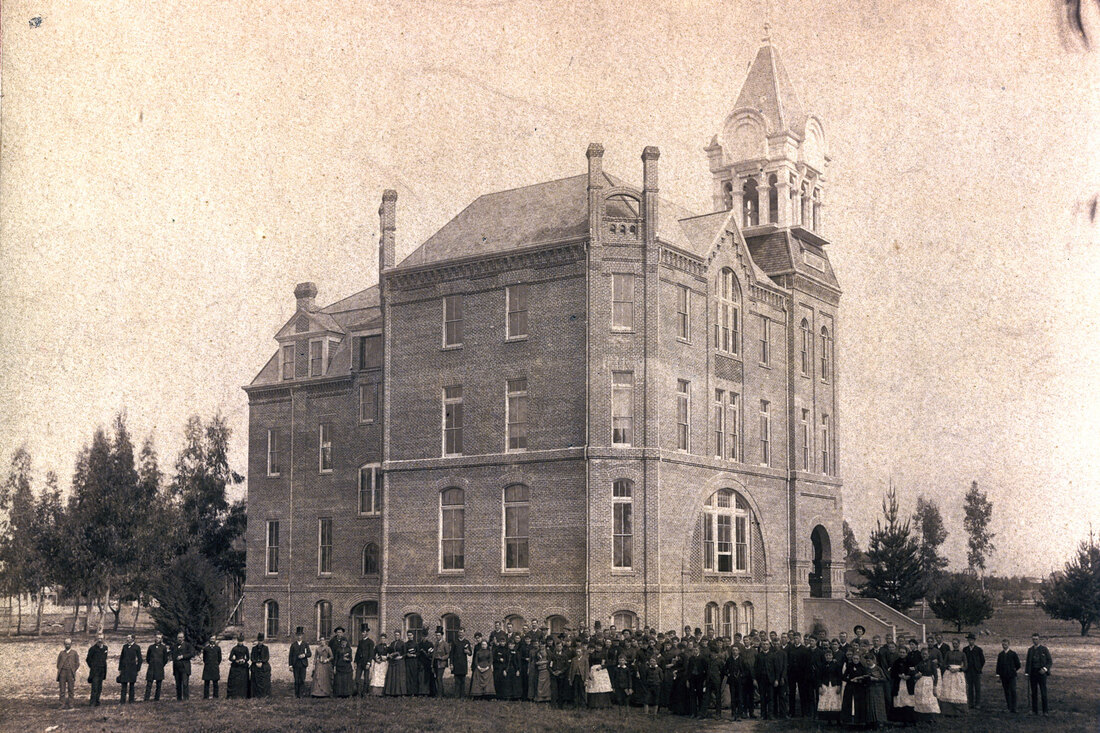|
Growth in hiring is typically a good thing. Why thank you Captain Obvious. While growth in hiring may very well be a good thing, successfully navigating the hiring process is an entirely different story.
Successful hiring can make or break the performance of a company. Unsuccessful hiring on the other hand creates all sorts of fun challenges for folks like you and me. In fact, Harvard Business Review identifies 80% of employee turnover is due to bad hiring decisions. What does this mean? First, let’s look at the potential tangible repercussions. According to Dice, one of the larger online job boards, a poor hiring decision for a candidate earning $100,000 per year could cost, on average, $250,000, and that expense comes right off the bottom line. That’s scary stuff! Basically, if the hiring decision you made ends poorly you can expect that mistake to represent 2.5 times the cost of whatever the salary is of the person you are hired. Rather than fearing the hiring process, or having it work against us, we should approach it with a strategic and open minded process to ensure success. Want to improve your hiring practices? Employee (pun intended) these 15 tips: 1. Why Would Someone Pick You/ Your Company? No longer is it realistic for employers to have the notion that just because you are in the drivers’ seat administering the interview means you have all the power. In fact, it’s quite the opposite as the current market is more in favor of the job seeker as they have plenty of options to choose from, you being one of them. If you want the best of the best you have to be able to speak to WHY people should consider you and your company. Your story must resonate with your interviewees. 2. Character Over Competency The best leaders use this philosophy – hire people who will bleed for your cause and will make the right decisions even in the darkest of hours. Competency in most jobs can be taught, character is what the person has developed well before you came around so don’t think you can change it easily, if at all 3. Behavioral Based Interviewing A great tactic while interviewing is to ask people what they would do in certain situations. This causes people to have to think and adjust in the moment. You aren’t trying to catch someone doing something wrong here, more or less understand their thought process and how they handle certain tasks or situations 4. Know What You Want Before You Interview All too often I hear people say, “we need to interview some people first to better understand who we are looking for”. You should never need to interview someone in order to help you understand who or what you are looking for. If you use this practice most often what it means is you don’t know what you’re doing from a leadership perspective. Tough love I know but it’s highly important you know what you want and need before you go looking for it during interviews. Wasting people’s time so you can figure out your direction with hiring isn’t advisable and it’s unprofessional. 5. Consult Others Before you go about the interview process speak with other managers about their experiences and your plans for your hiring process. The best advice typically comes from those who have been there and done it before that way you can learn from their successes and mistakes 6. Make Sure You Know And Understand Your Vision Somewhat similar to number #1 however this focuses on you and your specific team. Put yourself in the shoes of the person interviewing and think “Why would I want to work for her/ him?” “Does this vision excite me?” “What is my role in the future of this company?” 7. Best Foot Forward A helpful reminder if nothing else, remember when people are interviewing you are witnessing their ideal self, seeing them at their best. Asking questions which will give you better insight into who they are day-to-day, not just during your interview, are always good ways to get a better glimpse into who they are in a very day setting. 8. Tell Them Your Leadership Philosophy This is especially important if you are hiring the person to join your team. This is also very different than #6 which talks about the vision for your team or company. Here you are sharing with your interviewee how you lead and what you believe in. A great precursor question to this is asking the candidate what type of leadership they like and want in their next career 9. Interview Tests It’s a great practice to test candidates on their abilities on the spot, so long as the test is directly relatable to their core job function. If you are interviewing a Mechanical Engineer, for example, it is highly suggested you test them on the exact work they would be doing for you (ie Solidworks modeling) 10. The Reference Trick I personally think references are a waste of time. Why? Because the people on the other end of the phone are doing nothing but singing the praises of the person you are interviewing. In over a decade I can name on one hand the number of reference checks I’ve performed which brought about a poor review. Here’s how to get around it – when you are on the phone with the reference which was provided by your interviewee ask who else the interviewee worked with and then try to phone that person. This person won’t be prepared for your call and may provide you with more realistic insight into the persons’ work ethic and behaviors. 11. Put Yourself In Their Shoes Interviewing isn’t easy. In fact it can be downright terrifying for some people. Try looking beyond the interview. Just because someone’s interview isn’t a glowing success, or they may seem overly nervous, doesn’t mean they aren’t a good catch. Just because someone interviews well doesn’t mean they will perform well in the job. 12. Job Description = Performance Expectations It’s time we ditch the HR job descriptions and actually write and talk about what the newly hired employee will be expected to do from a performance perspective. If you’re hiring for sales, interview your candidates based on the quotas and metrics you’ll have in place. Ask how they will achieve those goals, what their strategies will be, etc. 13. Know Your Non-Negotiables What are you not willing to tolerate? When I’m in a position of hiring my two non-negotiables are attitude and integrity because both of these are things we have 100% control over. Knowing that I then ask questions around those two to see how they view my perspective on my non-negotiables. Asking interviewees their non-negotiables will also give you an idea of where their priorities land 14. Challenge Your Own Mindset One of the most common mistakes leaders make when hiring is they select candidates that remind them of themselves or select candidates that are beneath them skill wise. Great leaders surround themselves with people who are not only competent but will challenge the leader to be better. 15. Don’t Hire If It Isn’t What You Want I hired an employee that was most of what I was looking for but through the interview I uncovered some things that were less than great. Up to this point I had interviewed so many people that I just decided to move forward with this particular candidate and did the whole ‘cross your fingers’ bit in hopes they would work out. From that experience I can tell you it is always better to not hire when in doubt than hire because you need to fill a spot.
0 Comments
If you’re hiring or plan to hire this year it’s important you know two truths about present day hiring:
After a decade of working in the technical services and recruiting industry I’ve had few experiences, less than I can count on one hand, with companies that had onboarding programs which I would classify as amazing. Most companies fall short, way short, when it comes to providing a good onboarding experience to their new employees. There’s an important note to be made here. When people hear ‘hiring’ and ‘onboarding’ they have a tendency to think that those responsibilities fall on our partners in HR. This couldn’t be farther from the truth. The leaders who make the actual hiring decision have much to do with this process and good leaders know firsthand that their involvement can make or break the success of that new employee. Employees, regardless of age, are looking for an ‘experience’ at work. Of course having a job is important to them but increasingly important, arguably more important, for a large majority of the professional workforce is the need to work at a place that provides an experience of comradery, meaningfulness in work, giving back, etc. and the list goes on. Part of that experience is a company’s onboarding program and these programs shouldn’t be taken lightly. Does your current employee onboarding program communicate the right message to the best candidates in the market? Forbes estimates as high as 20% of employee attrition occurs within the first 45 days on the job as a result of poor employee onboarding. In fact, new employees who attended a well-structured onboarding orientation program were 69% more likely to remain at a company up to three years. That’s a huge impact! According to iCIMS, a software company specializing in recruiting systems and software, identified that new hires meet their first performance milestone 77% of the time when a formal onboarding program is in place versus only 49% of the time when one ceases to exist. What that tells us is that when a good employee onboarding program exist BOTH individual performance and job tenure improve dramatically. I would also dare to say that the employees’ happiness and appreciation for the job are improved as well. What do you do if your employee onboarding program lacks an experience to capture the best of the best? Look no further – this article provides a complete overview of the only onboarding program you will ever need. Be prepared. There’s some work to be done here before you can just go hire someone and plop them in their bean bag cubby, or dungeon, whichever you’re working with. For the purposes of this article the ‘onboarding experience’ refers to the entire spectrum from when a job posting first gets released straight through to the new employees sixth month on the job. The SQR1 Six Month Onboarding Program: Step 1: Candidate Identification This is the employees’ first glimpse into your company, their experience during this time matters greatly as to whether or not you will have an employee for years or for a matter of months. - Job Posting – make them friendly and exciting; talk less about performance expectations and more about the opportunity and experience they will have in the role; create enthusiasm in candidates by sharing with candidates exciting things to come like new technology, new services, positive changes within the company, company culture or philosophies, etc. - Call Backs - ensure people receive call backs to their application; there’s nothing worse than when people apply to a job opening and don’t hear anything in return; automated responses acknowledging the resume submission are at a minimum a necessity, at which point an acceptance or notice of decline is appropriate and certainly better than not saying anything at all and sending people into a black hole. For the rest of the article click here... Have you ever felt this way on your first day on the job?
“Welcome to [insert your company name here]. We’re glad you’ve joined us. Now that you are an employee please note the following... We ask that you not ever leave your cubical unless it’s to use the complimentary copy machine or in case of an emergency. Bathroom breaks are two minutes long and can only be taken at, oh I’m sorry, you’ve already missed that window today. We discourage you from talking with the other people in your vicinity, so don’t do it. If you have a problem, please feel free to Google your own solution from your smart phone, but not your work computer. Your training will consist of, well we’re not sure at this point so we’ll keep you posted on that. Thank you for your unconditional submission of your body and soul and welcome to the team.” While that may be grossly dramatized, more for my own amusement than anything else, it is incredible how often employees on day-1 feel this same way. While their new employer might not communicate directly in this manner the end result is that they leave people feeling miserable on their first week of the job primarily because the company hasn’t put enough focus into their ‘onboarding experience’. I’ve experienced this directly myself. When I started with a company many moons ago I showed up on my first day to have no computer, no trainer/ direction and no workstation. As a result I had to use a computer in the office lobby for my first week completely disconnected from the rest of my new colleagues. Few times did someone come to check up on me. I was handed a large booklet and told that I needed to work through the various sections as quickly as possible. Once I was done I was to tell the office manager and they would think of the next thing for me to do. An awful first impression to say the least. The onboarding experience is a crucial first impression and we had mentioned last week that Forbes estimates as high as 20% of employee attrition occurs within the first 45 days on the job as a result of poor employee onboarding. When we started the discussion last week on SQR1 Six Month Onboarding Program the focus was to bring light to a full proof way of making sure your new employees were welcomed with open arms and given all the tools to be successful with their new jobs. As a reminder, we will reference the term ‘onboarding experience’ several times throughout this article which refers to the entire spectrum from when a job posting first gets released straight through to the new employees sixth month on the job. If you missed part-1 of this article from last week click here to view: Step-1: Candidate Identification Step-2: Interview Process The SQR1 Six Month Onboarding Program (continued): Step-3: Offer - Appreciation – when contacting the candidate who just gave their life to your tireless interview process it’s important to start off appreciating the time they spent with you and your cohorts. They most likely had to rearrange and adjust their personal lives and dodge their current employer in order to make your interviews. Taking a moment to say thank you is the least we can do. - Personal Touch – I’ve always found it odd that in many companies HR or a recruiter is the one that makes the offer to the candidate, not the direct hiring manager. I’m aware that this is done many times for legal reasons however it leaves a bit of a cold impression with candidates. As a leader I have always found it important to call the people I’m looking to hire directly and discuss the offer letter with them one-on-one. No one will have more enthusiasm and passion about wanting to hire the new employee than the actual hiring manager themselves. A key piece here is that if you are going to go this route and you haven’t had experience doing it before it would be good to take a moment to speak with your HR group to understand what can and cannot be said during these calls. - Spoken Word & Paper – it isn’t enough to verbally offer someone the job. Professional companies out there big and small follow up the verbal offer with a formal job offer which covers every aspect of their prospective employment. This offer should also require the candidate to sign off on the terms of their prospective employment so there is little room for someone to come back and say they didn’t understand what they were getting into. Email the offer letter on company letterhead as a PDF copy for quick follow through. - Open Dialogue – when discussing the offer letter make sure to ask the candidate for their feedback once they have had an opportunity to review the fine print. It’s important that all parties involved understand all aspects of the proposed new partnership between employee and employer. Step-4: Physical Onboarding - Greetings – a designated person within the company, preferably the hiring manager, should be ready to greet the new arrival on their first day on the job. There’s nothing more classy than for the new hire to walk into the lobby and see a friendly face there to greet them and get the day started. Click HERE for the full article. About the AuthorTravis Smith is the founder and managing director of Square-1 Engineering, a medical device consulting firm, providing end to end engineering and compliance services. He successfully served the life sciences marketplace in SoCal for over 15 years and has been recognized as a ‘40 Under 40’ honoree by the Greater Irvine Chamber of Commerce as a top leader in Orange County, CA. Categories
All
Archives
April 2024
|
Visit Square-1's
|
|



 RSS Feed
RSS Feed


